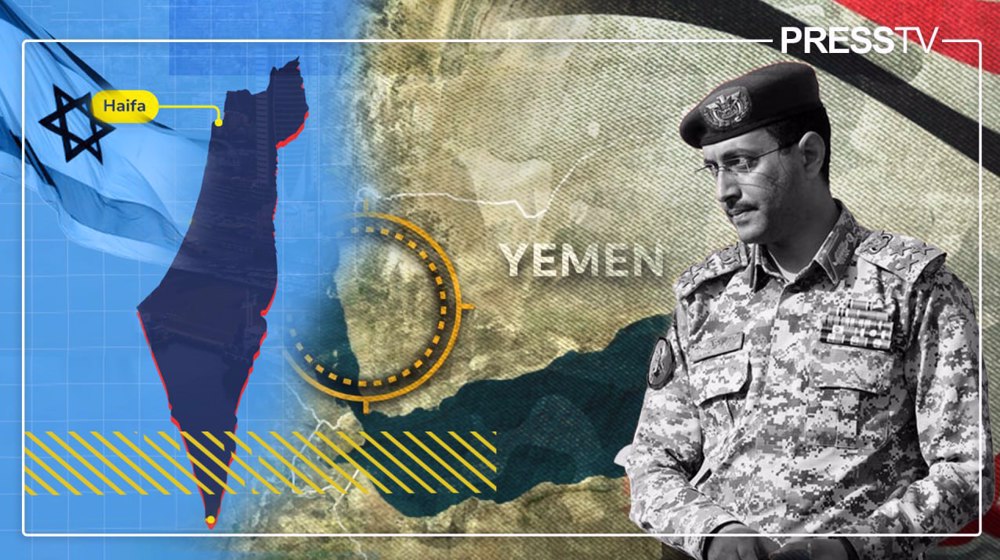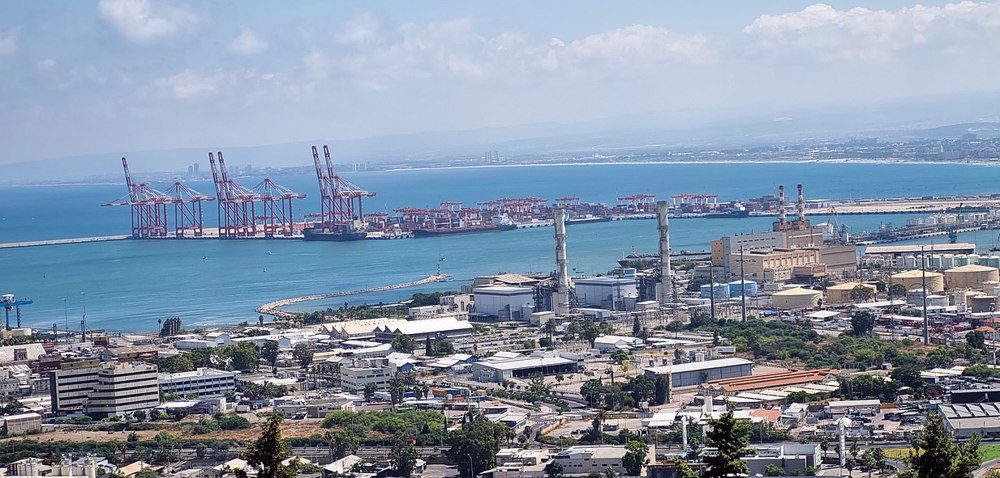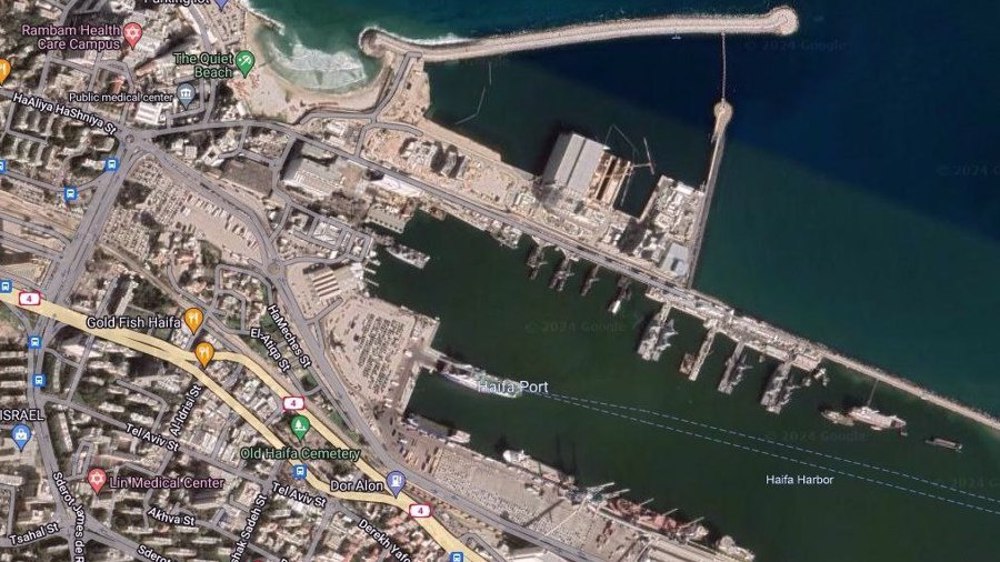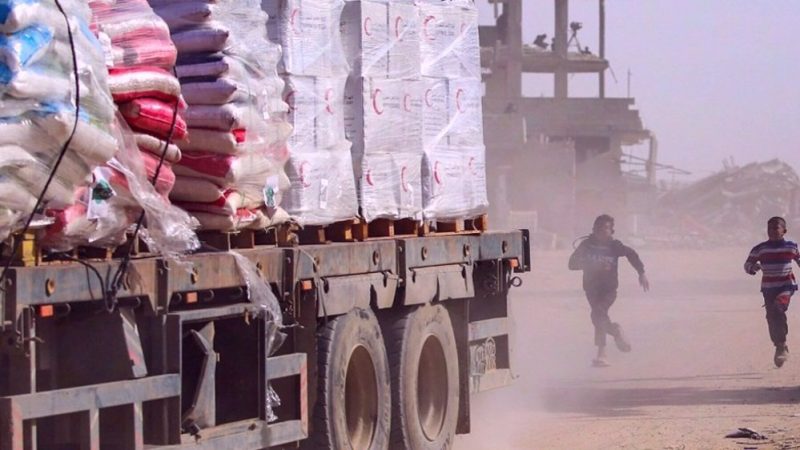Explainer: What is the significance of Yemen's naval blockade of occupied Haifa port?

By Ivan Kesic
In a statement issued late Monday, Yemeni Armed Forces spokesperson Yahya Saree announced the imposition of a naval blockade on the occupied port of Haifa in response to the Israeli regime’s ongoing aggression and blockade of the Gaza Strip.
“In response to the Israeli enemy’s escalation of its brutal aggression against our people and in Gaza—committing dozens of massacres on daily basis and claiming hundreds of lives in a crime of genocide,” the statement read, “and in response to the continued siege and starvation, and the enemy’s refusal to halt its aggression and lift the blockade.”
“The Yemeni Armed Forces, relying on Allah and trusting in Him, have decided–by His help–to carry out the leadership’s directives and begin enforcing a naval blockade on the port of Haifa.”
As part of the blockade, the statement warned that all companies with ships currently at or heading toward the occupied port of Haifa will be considered potential targets of Yemeni missile strikes.
The statement further noted that Yemeni forces have already succeeded in imposing a blockade on the port of Umm al-Rashrash, also known as Eilat, and bringing it to a standstill.
It also said the Yemeni forces will not hesitate to take additional measures in support of the oppressed Palestinian people and their resistance.
“All measures and decisions of the armed forces related to the Israeli enemy, including support operations and the ban on air and sea navigation, will cease once the aggression on Gaza ends and the blockade is lifted,” the statement added.
What is the role of Haifa Port?
Haifa Port, located on the Mediterranean coast in the occupied city of Haifa, is the largest and most important seaport controlled by the Israeli regime.
The port complex spans six kilometers along the city’s downtown, offering a wide range of shipping services and land and air transport connections to all parts of the region, which adds to its strategic importance.
It handles the majority of the regime’s maritime trade, including cargo, containers, and passenger traffic, making it a critical hub for the Israeli economy.
Situated on the Mediterranean, it serves as Israel’s primary gateway for international trade with Europe, North America, and other regions.
The port processes approximately 60 percent of Israeli container traffic and handles over 30 million tons of cargo annually, based on recent data up to 2023.
It is considered the busiest port in the occupied Palestinian territories for both imports and exports.
The port supports key industries like manufacturing, agriculture, and technology by facilitating the import of raw materials and export of goods.

It features advanced facilities, including deep-water berths, container terminals, and specialized terminals for bulk cargo, chemicals, and vehicles.
Ashdod Port, the second-largest port in the occupied Palestine, also situated on the Mediterranean, handles significant cargo but less than Haifa, focusing more on specific goods like agricultural exports and vehicles.
Eilat Port, situated on the Red Sea, is much smaller and has been severely impacted by the crippling Yemeni blockade since late 2023, reducing its trade volume by over 90 percent.
Haifa Port also has military significance as the northwestern part of its complex is used for the Haifa Naval Base, which houses the Israeli Mediterranean fleet and is the largest naval base in the occupied Palestinian territories.
In addition to hosting most of the regime’s warships and the entire submarine fleet, Haifa Port remains a preferred docking site for the Bahrain-headquartered US Navy’s Sixth Fleet, accounting for roughly 50 percent of all visits to the Eastern Mediterranean.
Each year, an average of 20 American warships, including aircraft carriers, dock in Haifa, primarily to utilize its advanced repair and servicing facilities.
This state-of-the-art naval port infrastructure, which includes several new buildings, a pier, a transfer pit, and various other facilities, was constructed by the US Army Corps of Engineers Europe District (NAU) during the 2000s.
The Haifa Port complex also includes a military shipyard, alongside Eilat and neighboring Atlit, one of three in the occupied Palestinian territories where the largest homegrown naval vessels were built.
Other critical infrastructure in the complex or surrounding area includes a gas power plant to the south, a civil-military airport, and an oil refinery with storage facilities to the east, as well as a naval training base to the west.

How will Yemen block the port?
The blockade of Eilat Port over the past two years has been implemented by prohibiting Israeli-affiliated ships from passing through the strategic Bab-el-Mandeb Strait between the Red Sea and the Gulf of Aden, and by striking ships that disobeyed the order.
Unlike the Red Sea Eilat Port, the Haifa Port is located on the Mediterranean coast, 2,000 kilometers from Yemen, which implies that the Yemeni armed forces cannot apply the same type of blockade.
Although Haifa and the surrounding area are out of range of Yemeni anti-ship missiles, they are within range of their ballistic and hypersonic missiles.
In recent weeks, Yemen has successfully blockaded Israeli Ben Gurion Airport with strikes of the latter type, exposing the inefficacy of Israeli and American air defense systems.
Hypersonic ballistic missile strikes have caused significant disruption to air transport and numerous foreign airlines have cancelled flights to Tel Aviv amid relentless Yemeni retaliatory strikes.
Yemen also has long-range drones, which were already proven in July 2024 by passing through multilayered Israeli air defense systems and hitting a target in Tel Aviv.
As in the case of Ben Gurion Airport, in the event of Yemeni missile and drone strikes on Haifa Port, foreign companies will be forced to suspend traffic and the Israeli regime will be forced to rely on its own fleet.
This scenario could cause catastrophic problems for Tel Aviv because most of the traffic is carried out by ships of foreign companies, while the domestic merchant fleet is extremely small and only has 40 ships, including four container ships and four oil tankers.






